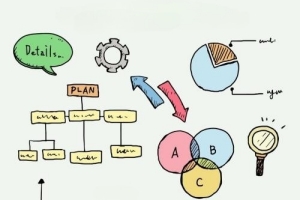Why Cashew Nuts Are So Expensive
Narrator: Cashews grow in select tropical climates around the world from the bottom of a hanging fruit like this. Just 1 kilogram of cashews can cost $10 wholesale. That’s over seven times as much as peanuts. And in the US, retail prices for whole cashews can reach $15 per pound. But without intensive, precise processing, these nuts wouldn’t be edible at all. So how exactly are cashews processed? And is this what makes them so expensive?
In 2017, the world ate 770,000 metric tons of cashews. They’re one of the most popular and valuable nuts in the world, worth over $6 billion today. Cashews grow in tropical locations like India, Vietnam, Ivory Coast, and here, in Sri Lanka. The trees are a member of the same family as poison ivy, and like poison ivy, cashew plants contain a toxin called urushiol. It’s found in the plant itself and the brown oil inside a nut’s shell. It can cause burns, itches, and blisters, which is why unprocessed cashews are considered dangerous to eat or touch. It’s also why they require more rigorous processing than other nuts.
Lahiru Dushyantha: Usually, people think that cashew products just come to the market as they are. No, this is a very complex process.
Narrator: Each fruit grows just one shelled nut, called a drupe, which workers separate by hand. The nuts must then dry under the sun to help draw out some of the shell’s caustic liquid. The most difficult and dangerous step is splitting open the nut, since toxic oil still coats the drupes. Cashews are brittle, so factories used to do this step manually to ensure machines wouldn’t break the nuts. But doing this by hand has frequently raised issues within the industry. NGOs have called out some factories for overworking employees and putting workers at risk of burning themselves if they can’t afford to buy gloves for protection.
Today, machines are advanced enough to crack the shells cleanly, keeping the majority of nuts intact and helping minimize risks to workers.
Lahiru Dushyantha: Presently, we do not have many people who can do this job, as many prefer other jobs. For us, to meet the demand for continuous cashew supply, we need more employees. That is why we use machines to de-shell. That is the difference. Let’s say that we can only de-shell 20 kilograms of drupes per day by hand. If we use the machine, we can de-shell 40 kilograms per day.
Narrator: After a machine splits open the shells, the next two crucial stages totally depend on workers, who have to do them by hand. The nuts are roasted to ensure, again, that the toxic liquid inside is destroyed.
The next stage is particularly tedious, as it relies entirely on handiwork. Workers must peel off the husk, or the dry outer covering that surrounds each nut, because it’s high in tannins and could irritate your throat. Removing it is a skill one masters with practice. Experienced workers de-skin only about 2.5 kilograms of cashews each night. This step is not only difficult but also has the biggest impact on price.
Lahiru Dushyantha: It is like this. Experience is the main thing. If a newcomer joins us, that person cannot do it according to the required standard, meaning the nuts will be broken.
Narrator: Cashews are graded by several features, like color, weight, and condition. Large whole nuts are most valuable.
Lahiru Dushyantha: Whole nuts are the most expensive grade. The next grade is split nuts. Lastly, the broken nuts. If the price of 1 kilogram of whole nuts is 2,500 rupees [$34.26], the price of the split nuts will be 50 rupees [$0.68] less than that. The price of the broken nuts will drop down to 2,000 rupees [$27.39].
Narrator: Because cashews can only be harvested once a year, growers like Lahiru save a portion of the nuts in stock so that they can continue making a profit in the months ahead. But it comes at a steep cost. Just stocking the nuts costs Lahiru more than $65,000 each year.
Lahiru Dushyantha: Because cashews are a seasonal fruit. It is not something like coconut, in which you can get a harvest every month. Cashews can be harvested just once a year. We have to invest a huge amount of money and stock them. If cashews could be harvested on a regular basis, the market price would not be that high. As the crop is taken once a year only, cashews are expensive.
Narrator: This causes prices to fluctuate a bit year-round. In December, Lahiru’s supply has decreased, so prices typically increase. But it also depends on each country’s supply chain. While Sri Lanka processes and sells many of its own cashews domestically, other countries export much of what they grow. It’s likely that many of the cashews you buy in the US or Europe were grown in Africa, processed in Vietnam or India, and finally exported to the Western market.
Africa produces half of the world’s supply of cashews. Ivory Coast, for example, produced about 730,000 metric tons of raw cashews in 2019. But it exported over 90% of that. This is because Ivory Coast and other African countries still don’t have a robust processing industry. Ivory Coast plans to expand domestic processing by 2024. But without it, cashews are significantly less valuable.
In 2018, the export price of cashews processed in India and exported to Europe was 250% higher than the price paid to Ivory Coast farmers. Vietnam, on the other hand, was one of the first countries to invest in automation, making it a key location for processing cashews. Today, Vietnam is the largest cashew exporter in the world. In just the first three months of 2021, the country exported over 108,000 tons of cashews.
Automation has also lessened the need to hire workers, which is a reason many factories in India and Sri Lanka still process manually.
Susila Padmakanthi: In many homes, this is an inherited profession for generations. I think around 200 to 300 families in this village make an income from the cashew industry.
Narrator: By hand or machine, processing cashews is no easy task. And the world’s climate crisis could make it even harder. A 2013 report on the climate’s impact on cashews shows unseasonal rains and heavy dew can impact the quality and quantity of the nuts. Just this year, Lahiru’s harvest came late because of it.
N. A. Maheepala: Because of the rain, it took some time for the sprouts to come. If it rains, the fruits will get washed out, resulting in less harvest. When the harvest is good, I usually collect around 1,000 kilograms per day. As the harvest is less these days, I only collect 300 to 400 kilograms per day.
Narrator: Amidst climate challenges, cashews continue to be popular. Healthy-eating trends are key to driving demand, along with the versatility of the cashew itself – another reason the nut remains so valuable. Whether used as a snack, cooking paste, or an alternative to milk or butter, cashews have many applications around the world. Researchers predict the market will grow to $7 billion by 2025. And although cashews are currently cheaper than they’ve been in recent years, demand is likely to drive prices higher in the future.















